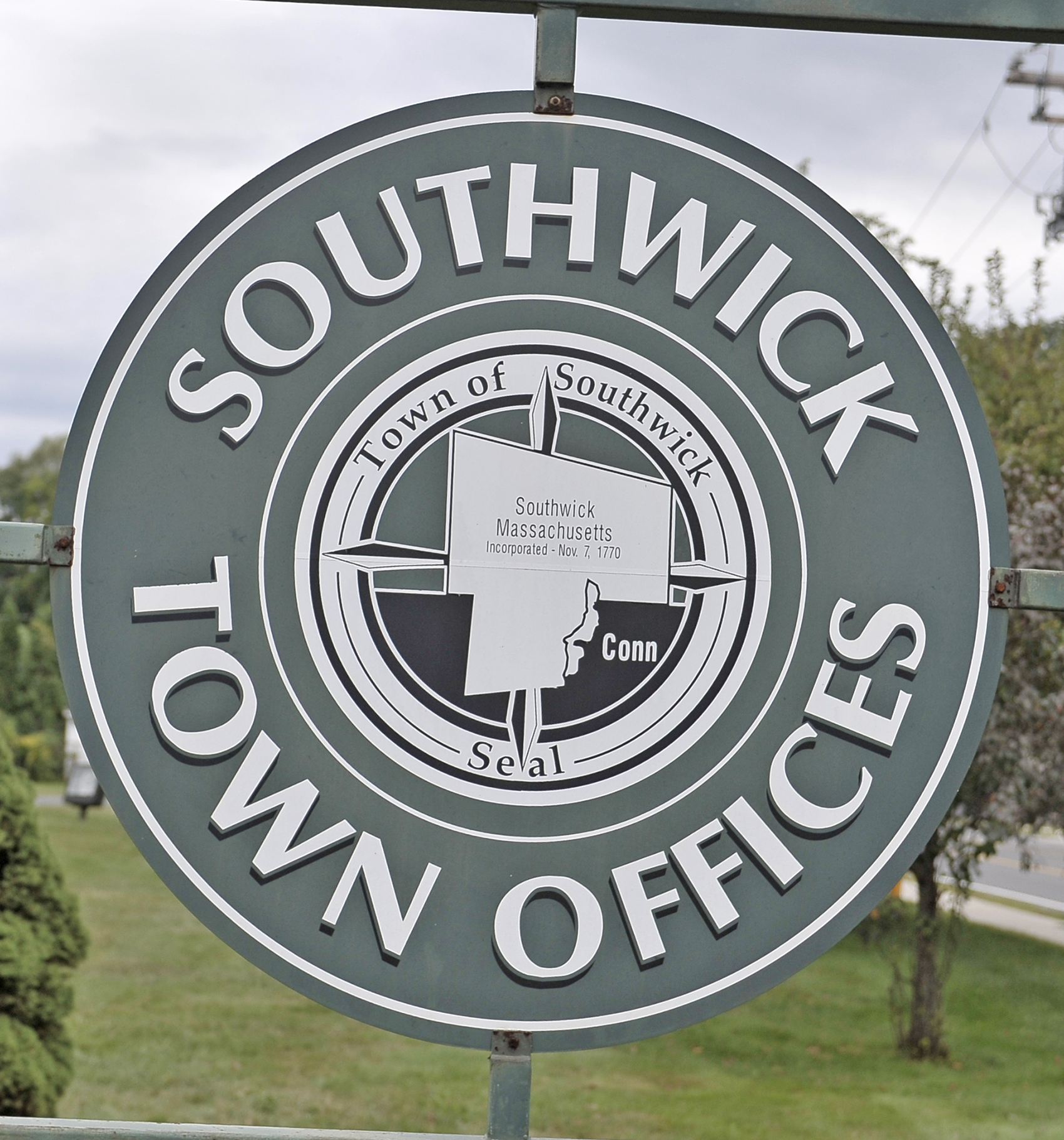To the Editor,
Where I stand on the water…
In 2017 the Council was presented with a $5M bond request to clean up northside water and replace the East Mountain water tank. Shortly after I joined the Council in 2018 another $13M bond request was presented.
The City has decided that Granular Activated Carbon (GAC) is the best course of action. The Mayor after all stated before the Council that it is the fastest and cheapest solution.
With no immediate relief in sight a few of us called for temporary filtration to be installed at Wells 1&2. We were told there was nowhere to place a temporary filter at Well 1 (Holyoke Rd) and only Well 2 (Union St) had a suitable site. After knocking doors on Holyoke Rd, I found a location that was willing to be donated. Every excuse in the book was used as to why it couldn’t be done. Being reliant on Well 2 and southside water with a water ban created the urgency to push forward with filtering Wells 7&8.
Wells 7&8 are each permitted for 2 million gallons per day (MGPD.) During summer there are draws upwards of capacity. After Wells 7&8 were shut down for 2 years, the Water Dept pumped and dumped 400k gallons to then draw a 120 gallon sample. The sample was sent to the world renowned PFAS expert Chris Higgins and used for bench scale testing to determine the effectiveness and longevity of the GAC. It was first tested for PFAS compounds which showed 1/2 to 2/3 of the known PFAS chemical load was missing.
Once testing was completed, we were told that the GAC would be effective for 11 months before requiring changeout. A changeout would cost $640k (8 filters x $80k.) The industry accepted filtration rate for GAC is 90%. This is where the cost of those filters and changeout intervals come into question.
Mass DEP provided researchers at UMASS Amherst with some of the firefighting foam (PFAS source) from Barnes ANG. They determined that it contained 300 PFAS compounds. Currently Westfield tests for 21 PFAS compounds, and only 5 are currently regulated to 70ppt under an advisory limit. Mass DEP is working on language of a hard limit maximum contaminant level (MCL) of 20ppt and adding a 6th compound. This leaves untested 279 compounds which were discharged at the same time as those testing at high levels.
One might ask what alternative(s) are there to being solely reliant on these four Wells?
Two options that really need to be given more consideration. Option 1 being Cabot Rd. In the 1980’s the City purchased a large tract of land on Cabot Rd with the stated goal of locating a landfill at the site. The state ultimately issued a moratorium on new landfills in the state. In the mid 1990’s the City contracted Geosphere to locate any potential high yield Well sites in the City. Ultimately Cabot and a .5mgpd site was identified on protected land off Root Rd near the Root’s athletic facilities, but .5mgpd won’t solve our problems.
Cabot Rd site was identified as potentially having the ability of 2+mgpd. Meanwhile the City determined the best use of this location is to expand the turnpike industrial park over the entire
parcel. One large objection raised by the DPW Director was that the Twiss St landfill is unlined and located roughly .5mi from the proposed Well site. I uncovered a report with huge volumes of information which disputed this. It included drought calculations with the down gradient null point (DGNP.) The calculations showed the water flowing south towards the Westfield River and with the elevation difference, that it was impossible to reverse flow drawing contamination uphill back towards Cabot Rd. This factors the volume of water coming from Southampton and the Montgomery range.
The Barnes Aquifer divides in Southampton and the granite underground formation runs just to the west of Rt.10 ending roughly at the base of clay hill. It is impossible for PFAS contaminated water to travel west to this portion. Upstream Yellow Stonehouse Organic Farm has tested the water and it is free of contamination. At the previously proposed charter school site on Root Rd it was documented that the aquifer starts at 14′, with an average depth of 40′-200′ deep. Some Cabot Rd homeowners have Wells 500′ deep and they have tested free of contamination.
I took the documents to a meeting with the Governor’s office, Dept of Health, DEP, & EEA. They had no knowledge of this while the site was obtaining MEPA certification to proceed with an industrial park. I then took the documents and presented them to our water commission, who had also never seen them. After I provided them with copies, they requested Council authorization to spend $26k for Geosphere to re-evaluate the site. This was the better part of a year ago. Without progress being made and hearing that Geosphere is busy. I contacted Geosphere and learned that while they have been contracted, they were instructed any time sensitive projects can bypass Cabot Rd. Cabot Rd viability has been placed on the back burner, yet work on an industrial park is full steam ahead.
Option 2 is the Tighe Carmody Reservoir which is owned by Holyoke and located in Southampton. The Tighe Carmody has never tested positive for PFAS. It is one of only a handful of reservoirs in the state that are pure enough to not require filtration, like the Quabbin Reservoir. Holyoke is permitted to consume over 19MGPD, with Tighe Carmody making up 14MGPD of that. Their maximum summer draw is 4.7MGPD. They are literally drowning in water and are willing to sell us the water we need for roughly $500/MG.
Arguments made were this would cost far more than our current plan and we would not control the source. The cost estimate included $13M for a filtration facility which we would not need and lining the two 20″ pipes that Holyoke already has running through Westfield. Holyoke water Director Conti stated the lines were capped and in good shape. Councilor Surprise found a report from when the power plant was looking to be built and use these lines. The report documented how the lines were periodically cut open, inspected, and scoped to determine the condition of the pipes. It was documented they were in great shape.
If we were to back out the costs of filtration and lining it would make it cost competitive with the $7.1M filter facility at 7&8, and cheaper than the proposed $9.3M for 1&2. Utility expenses should be factored into pump 2MGPD out of the ground, heat and cool these huge filter facilities, and pumping 2MGPD in to the East Mountain tank. Tighe and Bond documented how the Tighe Carmody would gravity fill our tank and could possibly require a pressure reducing valve. The
20″ Holyoke lines run past our East Mountain tank on their way over to the Holyoke treatment plant at Ashley and Mclean Reservoirs.
Arguments have and will be made that a Cabot Rd Well would change us from a registered system to a permitted system. This would be correct, if we did not remove a proportional amount from the system. I propose permanently taking Well 7 or 8 offline to satisfy this requirement. A similar argument has been made for Tighe Carmody. However, since the lines have been in place and there is the interbasin transfer act, we are allowed by DEP to draw water just like we do from Springfield on the southside of the City.
Would you rather attempt to filter Wells that are in the top .5% of most PFAS contaminated Wells in the country, or start with something that is known clean? GAC was touted as the $50M solution for Newburgh, NY. This system was viewed by our Water Dept and stated our system was modeled after it. The system ran for ~1 month and subsequently turned off. They have been buying water from the NYC aqueduct. Hoosick Falls, NY has gone in the direction of running a 13 mile water main from a neighboring community after GAC failure. Portsmouth, NH is still struggling with GAC failure and frequent change outs. They went to the extreme of running 4 filters per Well head (ours is designed for 2) and adding resin filters, which subsequently failed. Barnstable County (Cape Cod) has dealt with GAC failure. Ann Arbor, MI has GAC failure and is currently in a multi-year process to install additional filters to lower (not stop) the PFAS to legal limits. Decatur, AL is different in that it is industrial PFAS pollution. They are abandoning GAC and switching to a reverse osmosis (RO) system as the GAC changeouts would cost $98M over 20 years.
None of this factors that the burnpit at Barnes still registers 2x higher than when Wells 7&8 were running. This doesn’t factor continued foam discharges at the airport. It is documented that the PFAS foam systems are annually tested with 3′-4′ of foam filling all aircraft hangers. Doors are opened and runway plows push it in to the grass. Some goes into the ground and the rest runs in to the drainage system which empties in Arm Brook. Arm Brook runs past the homes on Lower Sandy Hill which have required in home filtration for excessive PFAS. It also runs past Well 2 (Union St) and very well may explain why Well 2 always tests higher than Well 1 which is in the middle.
We have had accidental discharges filling the alert aircraft hangar. What if the horrible B-17 crash at Bradley took place here? They would not think twice about deploying PFAS foam to knock down the fire. Last year the floor in the hanger used by the WTA aviation program required replacement due to fuel and oil (hydrocarbons) in the soil, hydrocarbons which have previously tested positive in our Wells and clogs GAC. The DPW Director disputes this but aside from lab results, think about it. Fuel and oils were dumped and set on fire necessitating the use of the foam. The foam blocked all of the fuel and oil from burning off, ultimately ending up in our aquifer.
I do not want to leave things to chance. I feel leaving residents beholden to a single source of contaminated water, in the industrial part of the City is dangerous if not criminal. There is absolutely no reason we shouldn’t leave any stone unturned when it comes to Cabot Rd and Tighe Carmody.
Sincerely,
Matt Emmershy
At-large City Councilor
Editor’s note: Emmershy is running for re-election.




